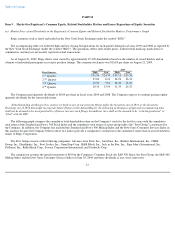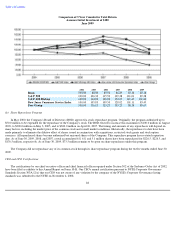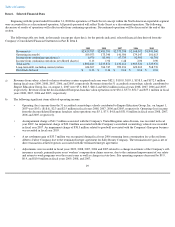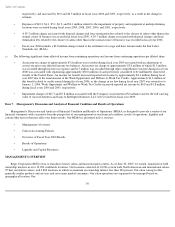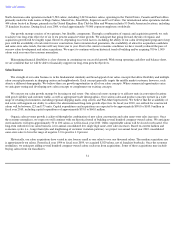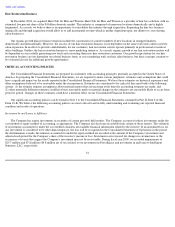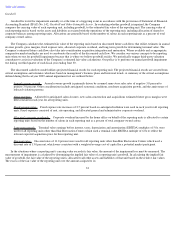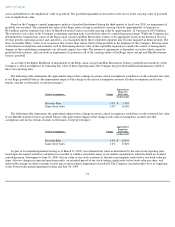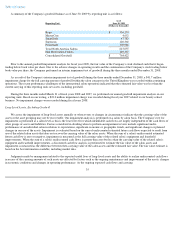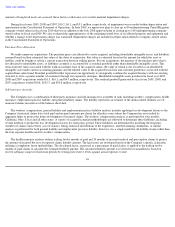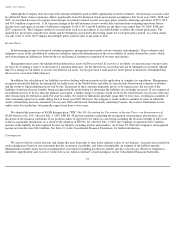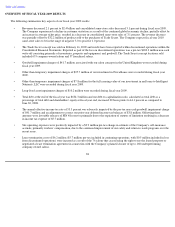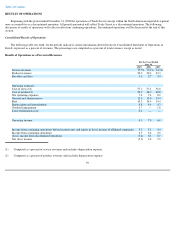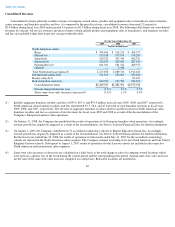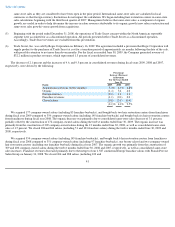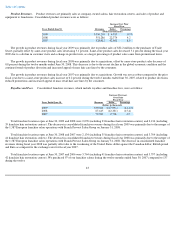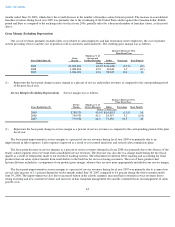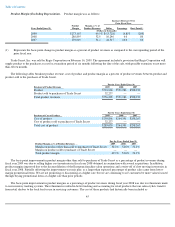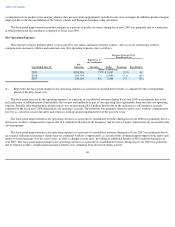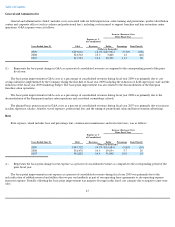Supercuts 2009 Annual Report Download - page 39
Download and view the complete annual report
Please find page 39 of the 2009 Supercuts annual report below. You can navigate through the pages in the report by either clicking on the pages listed below, or by using the keyword search tool below to find specific information within the annual report.
Table of Contents
Although the Company does not expect the amounts ultimately paid to differ significantly from the estimates, self-insurance accruals could
be affected if future claims experience differs significantly from the historical trends and actuarial assumptions. For fiscal years 2009, 2008, and
2007, we recorded decreases in expense from changes in estimates related to prior year open policy periods continuing operations of $9.9, $6.9,
and $10.0 million, respectively. A 10.0 percent change in the self-insurance reserve would affect income from continuing operations before
income taxes and equity in income of affiliated companies by $4.0, $4.7 and $4.8 million for the three years ended June 30, 2009, 2008 and
2007, respectively. The Company updates loss projections each year and adjusts its recorded liability to reflect the current projections. The
updated loss projections consider new claims and developments associated with existing claims for each open policy period. As certain claims
can take years to settle, the Company has multiple policy periods open at any point in time.
Income Taxes
In determining income for financial statement purposes, management must make certain estimates and judgments. These estimates and
judgments occur in the calculation of certain tax liabilities and in the determination of the recoverability of certain deferred tax assets, which
arise from temporary differences between the tax and financial statement recognition of revenue and expense.
Management must assess the likelihood that deferred tax assets will be recovered. If recovery is not likely, we must increase our provision
for taxes by recording a reserve, in the form of a valuation allowance, for the deferred tax assets that will not be ultimately recoverable. Should
there be a change in our ability to recover our deferred tax assets, our tax provision would increase in the period in which it is determined that
the recovery is not more likely than not.
In addition, the calculation of tax liabilities involves dealing with uncertainties in the application of complex tax regulations. Management
recognizes potential liabilities for anticipated tax audit issues in the United States and other tax jurisdictions based on our estimate of whether
and the extent to which additional taxes will be due. If payment of these amounts ultimately proves to be unnecessary, the reversal of the
liabilities would result in tax benefits being recognized in the period when we determine the liabilities are no longer necessary. If our estimate of
tax liabilities proves to be less than the ultimate assessment, a further charge to expense would result. In the United States, fiscal years 2006 and
after remain open for federal tax audit. For state tax audits, the statute of limitations generally spans three to four years, resulting in a number of
states remaining open for tax audits dating back to fiscal year 2005. However, the company is under audit in a number of states in which the
statute of limitations has been extended to fiscal years 2000 and forward. Internationally (including Canada), the statute of limitations for tax
audits varies by jurisdiction, but generally ranges from three to five years.
We adopted the provisions of FASB Interpretation ("FIN") No. 48, Accounting for Uncertainty in Income Taxes—an Interpretation of
FASB Statement No. 109
, effective July 1, 2007. FIN No. 48 provides guidance regarding the recognition, measurement, presentation, and
disclosure in the financial statements of tax positions taken or expected to be taken on a tax return, including the decision whether to file or not
to file in a particular jurisdiction. As a result of the adoption of FIN No. 48, effective July 1, 2007, the Company recognized a $20.7 million
increase in the liability for unrecognized income tax benefits, including interest and penalties. As of June 30, 2009 the Company's unrecognized
income tax benefits were $14.8 million. See Note 13, to the Consolidated Financial Statements, for further information.
Contingencies
We are involved in various lawsuits and claims that arise from time to time in the ordinary course of our business. Accruals are recorded for
such contingencies based on our assessment that the occurrence is probable, and where determinable, an estimate of the liability amount.
Management considers many factors in making these assessments including past history and the specifics of each case. However, litigation is
inherently unpredictable and excessive verdicts do occur, which could have a material impact on our Consolidated Financial Statements.
37


